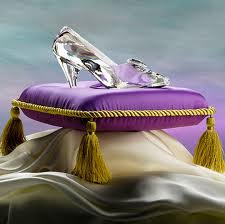There is a blog entry on Businessweek’s website entitled “McDonald’s Enters the Age of Transparency.” It explains that starting this week McDonald’s will begin to post the calorie content of their food on the menu boards in each establishment. This is two years prior to a federal regulation, stemming from President Obama’s health care reform, requiring all restaurants to do so on their menus. The article goes on to explain that McDonald’s has done this prior to the regulation because it is something their customers want and it shows that they are not trying to hide anything, which the entry calls transparency, making them a responsible, trustworthy and respectable company. Many people are becoming more health conscious and are starting to count calories or eliminate certain foods and/or ingredients from their diet as they become more aware of what constitutes a healthy diet.
Awareness is not only becoming important in foods but in products as well. The driving force behind this article is the fact that people want to know exactly what is included in the items they purchase as we are not only becoming a health aware society, but an ecological one too. Whether you consider it a trend or rising worry over global warming and oil prices, one thing is certain–people are being more attentive and frugal. The frugality may, and probably is, a result of our current economy both countrywide and worldwide; on the other hand the idea of worth or quality in a product may also play a key role. As we have learned in class, quality is one of the main factors in determining whether or not someone purchases something. The only problem is how do you define quality? The definition is different to everyone. For some it may be reputable brand, others may judge on materials, appearance and price. This is why companies must do extensive research in designing and developing their products to ensure they meet the customer’s wants and needs as closely as possible as demonstrated in our paper plane project.
While this transparency provides the customer with a clear picture of what is included in their purchases and the company with the possibility of greater profits, if they truly took customer opinion to heart. Looking deeper another benefit of transparency to a company is helping to reduce any liability issues if eventually sued. Cigarette and alcohol companies serve as the best examples since they are required to disclose the risks of using their merchandise in the form of Surgeon General Warnings. Toy companies also serve as a good example; they are required to state choking hazards on their products. The reducing liability aspect may be seen by some as a way of the company protecting itself, suggesting unsafe products or poor craftsmanship and possibly low quality. It all depends on the customer’s way of thinking showing that the customer truly leads the market.
What do you think?
http://www.businessweek.com/articles/2012-09-18/mcdonald-s-enters-the-age-of-transparency
